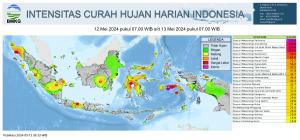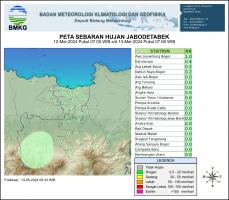Concerning its large size, strong wind and cloud cover, cyclone caused significant impact to places it passed. Those are strong wind, heavy rain continuous for hours or even for days with a chance of flood, high wave, and storm surge.
Cyclone passes ocean resulting high seas, heavy rain and strong wind is dangerous for shipping. Cyclone spin the water, whirl them to result high wave. In land, strong wind destroys vehicles, buildings, briges and other constructions, change them into dangerous flying debris. Storm surge or sea level rise caused by cyclone is the most hazardous impact land may have.
According to history, 90% cyclone is deadly. Cyclone spinning reaches land and vertical windshear around may produce tornado. Tornado may also form as resulted by vorticity within the cyclone eyewall.
Direct Impact
Direct impact means cyclone impact within cloud band area. They could be high wave, storm surge, heavy rain and strong rotating wind.
Indonesia experience cyclone direct impact when Kirrily, a rare event of cyclone development near equator occurred above Kai Islands at 27 April 2009. Kirrily brought heavy rain and storm surge within the area. It is reported that tens of houses destroyed, tens others submerged, roads broken, and high waves occurred from 26 to 29 April. Rainfall recorded in Tual is 20 mm, 92 mm and 193 mm for 27, 28 and 29 April 2009.

Remote Impact
Climatologically, Indonesia is not tracked by tropical cyclone, yet cyclone occurrence around the area, especially those developed in Western North Pasific, South East Indian Ocean and Australia changes weather pattern in Indonesia. Those weather pattern changes bring remote impact through the area.
Cyclone remote impact may exist through:
- Convergence zone. Tropical cyclone occurs at the northern or western waters of australia often produce convergence zone above Java, Java Sea, West Nusa Tenggara, East Nusa Tenggara, Banda Sea, Timor Sea, to Arafuru Sea. This convergence zone brings convective cloud with heavy rain over the area.
Convergence zone may looks like elongated thick cloud area when it seen from weather satellite imagery, as it looks like comma tail of the cyclone.
An example of this phenomenon is when there is cyclone George in 2 March 2007 with cyclone tail along East Java to East Nusa Tenggara. Rainfall observed at the moment in Ruteng, Waingapu, Rote and Kupang are 172mm, 52 mm, 78 mm and 73 mm. - Shear area. Cyclone occurrence in south eastern Indian Ocean offen form shear area over southern Sumatra or western Java that will also experience heavy rain.













